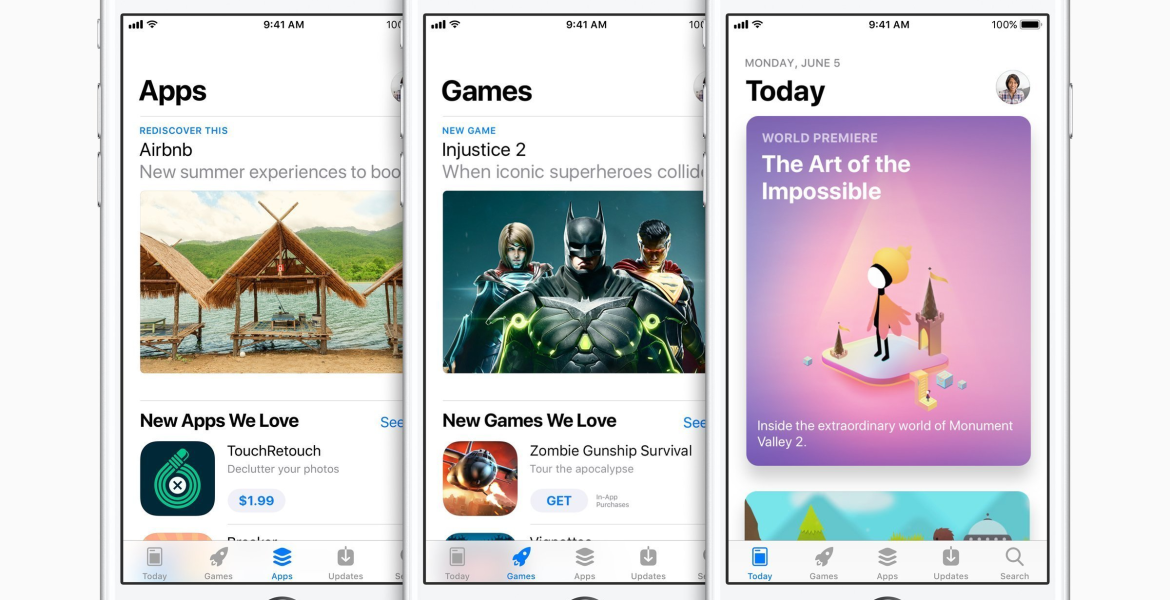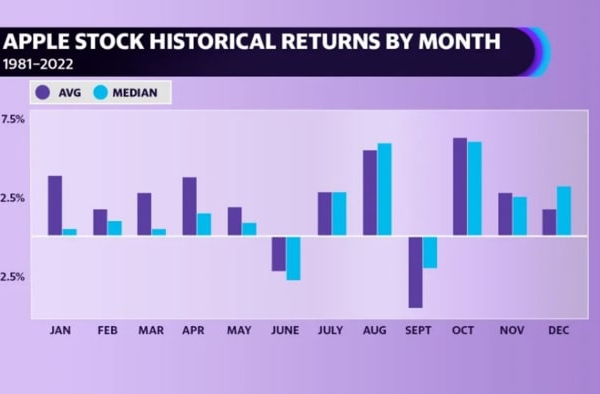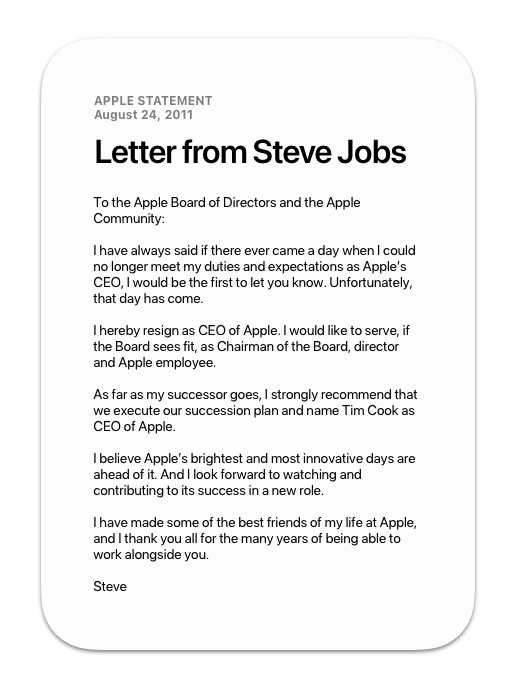iOS App Store Success: A Milestone in Digital Distribution

The iOS App Store has transformed the landscape of mobile applications since its launch in 2008, pioneering the way for app development and digital distribution. By August 30, 2010, it celebrated a remarkable milestone: over a quarter of a million apps available for users, reflecting the App Store’s success and its impact on the tech industry. This achievement not only proved the viability of the digital marketplace but also showcased Apple’s ability to cultivate a thriving ecosystem for developers. The App Store quickly became synonymous with app success, inspiring countless entrepreneurs to launch their creations in hopes of striking gold in this burgeoning market. As the App Store continues to evolve, its role in driving innovation and shaping the future of mobile technology remains undeniable, making it a pivotal chapter in the history of digital distribution.
When referring to the iOS App Store, it’s essential to recognize how it has become a cornerstone for mobile application access and distribution. This digital marketplace serves as a vital platform for app creators, providing an avenue for their innovations to flourish. The Apple App Store has significantly influenced consumer behavior, with its vast catalog facilitating easy access to thousands of mobile applications. As a leading player in the app ecosystem, it not only empowers developers but also revolutionizes how users interact with technology, drawing attention to the expanding universe of mobile solutions. The success of this app platform highlights the importance of strategic app development in today’s competitive landscape.
The Rise of the iOS App Store: A Game Changer in Digital Distribution
The iOS App Store has undeniably transformed the landscape of digital distribution, bringing together developers and users in unprecedented ways. Launched in 2008, the App Store was the first significant platform to allow third-party developers to distribute their applications directly to consumers. This model not only facilitated quick access to a diverse range of apps but also marked the beginning of an economic boom for mobile app development. By August 2010, just two years post-launch, the App Store reached an impressive milestone of 250,000 apps available for sale, illustrating the rapid growth and potential of this new digital marketplace.
In its infancy, the iOS App Store was a gamble for Apple, which had previously seen massive success with the iTunes Music Store. Steve Jobs’ initial hesitation turned into celebration as the App Store proved to be a lucrative venture, generating billions in sales. With developers eager to create innovative applications and tools for users, this thriving ecosystem highlighted the significant shift towards digital distribution as the preferred method for software delivery. As the App Store flourished, it became clear that it was not just a passing trend but a fundamental change in how apps were consumed and monetized.
Understanding App Store Success: Factors Behind the Boom
The success of the iOS App Store can be attributed to a variety of factors that collectively created a highly conducive environment for app development and sales. One of the key elements was Apple’s commitment to creating a streamlined and user-friendly platform for both developers and consumers. By maintaining strict quality control and a consistent user experience, the App Store established itself as a reliable source for obtaining mobile applications. This reputation for quality helped lure developers into the ecosystem, driving the rapid growth witnessed in the early years.
Moreover, Apple’s marketing strategies played a pivotal role in promoting the App Store as a central hub for mobile applications. The catchy slogan “There’s an app for that” resonated with consumers, highlighting the endless possibilities available at their fingertips. In 2010 alone, the App Store generated remarkable sales figures, converting users into loyal customers who were eager to explore the extensive app offerings. This marketing effort, combined with innovative app designs and functionalities, ensured that the App Store was not just a digital marketplace, but a cultural phenomenon that set the stage for future app ecosystems.
Apple’s robust developer support further boosted the iOS App Store’s success, with resources such as the Apple Developer Program and extensive documentation. This support system encouraged a diverse array of applications, catering to niche markets and various consumer interests. As developers created more specialized and unique apps, the App Store was able to expand its audience, reaching users with different needs and preferences. The cycle of innovation and feedback between developers and users fueled further growth, solidifying the iOS App Store’s place in mobile tech history.
The Shift to 2 Million Apps: A Decade of Growth in the App Store
Fast forward to 2025, and the iOS App Store has reached an astounding landmark of approximately 2 million apps available for users. This incredible growth reflects not only the increased demand for mobile applications but also the versatility of the platform itself. With advancements in mobile technology and a growing user base, the App Store continues to thrive as a primary avenue for app development and digital distribution. Developers are now exploring new frontiers, leveraging cutting-edge technologies such as augmented reality and artificial intelligence to create compelling and engaging experiences.
This exponential increase in available apps over the years has transformed how consumers interact with technology. No longer limited to basic functionalities, users can now find applications that suit their specific needs, tasks, and preferences. The App Store’s evolution from 250,000 apps in 2010 to nearly 2 million in 2025 signifies a major milestone not just for Apple, but for the entire tech industry, showcasing a revolution in both app creation and consumption. As the iOS App Store continues to expand, it remains a pivotal player in the app development landscape, offering a platform where innovation thrives.
Navigating App Store Challenges: Antitrust Scrutiny and Future Directions
Despite its remarkable success, the iOS App Store faces significant challenges, particularly surrounding antitrust scrutiny. With the platform’s dominance in the mobile app distribution market, regulators are questioning the implications of such control. In 2024, the Department of Justice filed a landmark lawsuit against Apple, accusing the company of monopolistic practices. This scrutiny drives a conversation about fairness in app distribution and calls into question the future of developer engagement within the App Store ecosystem.
Moreover, the European Union’s Digital Markets Act has forced significant changes within the App Store, allowing for alternative payment systems and app sideloading. These regulatory developments challenge Apple to adapt and innovate further to meet both legal requirements and developer expectations. As the landscape continues to evolve, the advantages that once defined the App Store are now under examination, prompting Apple to rethink its strategies for maintaining its position as a market leader while ensuring fair access for developers and consumers alike.
The Economic Impact of the iOS App Store on App Developers
The iOS App Store has generated substantial economic benefits for app developers, evident from the staggering $1.3 trillion in total billings reported in 2024. This success underscores the App Store’s role as a powerful platform for generating revenue and creating job opportunities in the tech sector. The accessibility of the App Store allows developers, ranging from independent creators to established companies, to reach millions of potential customers worldwide, thus amplifying their market reach and profitability.
Moreover, the App Store has democratized the app development landscape, offering a platform for small developers to compete alongside larger corporations. This level playing field fosters innovation, as developers are incentivized to create unique and engaging applications to capture consumer interest. As a result, the App Store has not only contributed to individual developer success but has also catalyzed the growth of the entire app economy, creating a robust environment for creativity and entrepreneurship in technology.
The Future of App Development on the iOS App Store
Looking ahead, the future of app development on the iOS App Store appears promising, yet filled with challenges. The continuous evolution of mobile technology and changing consumer preferences necessitate that developers remain adaptable and forward-thinking. With emerging trends such as artificial intelligence and machine learning gaining traction, developers are urged to innovate and integrate cutting-edge technologies into their applications. The success of the App Store will heavily rely on how well developers can leverage these advancements to create engaging user experiences.
Additionally, regulatory changes will play a significant role in shaping the future of the App Store. As more governments scrutinize Apple’s practices regarding app distribution, the company may need to implement further changes to its operational model. This environment of adaptation presents both risks and opportunities for developers, who must stay informed and ready to adjust to new requirements while maximizing their app’s potential in an increasingly competitive marketplace. The future of the iOS App Store is likely to be characterized by both innovation and the quest for balance between growth and compliance.
The Cultural Impact of the iOS App Store
The cultural impact of the iOS App Store extends beyond mere economics; it has reshaped how society interacts with technology. By putting powerful software directly into the hands of users, the App Store has influenced lifestyle choices, behaviors, and habits. From fitness tracking to mobile banking, the versatility of apps available has allowed users to integrate technology into every aspect of their lives, redefining convenience and accessibility. Consumers are no longer passive recipients of technology; they actively engage with it through the diverse applications provided by the App Store.
Moreover, the App Store has fostered a new wave of digital creativity, empowering individuals to share their stories, art, and talents on a global stage. The platform has enabled countless users to turn their ideas into businesses, creating a vibrant ecosystem where creativity and entrepreneurship flourish. The cultural significance of the App Store is evident in its contribution to the proliferation of mobile content, establishing a new standard for connection and creativity in an increasingly digital age.
User Engagement and Retention Strategies in the App Store
In order to achieve long-term success in the iOS App Store, developers must focus on user engagement and retention strategies. Creating an app that captures user attention is only the first step; retaining that attention in the face of competition is crucial. Many developers are investing in features such as personalized content, push notifications, and regular updates to enhance user experience and keep their audience engaged. By understanding user behavior and preferences, developers can tailor their applications to meet evolving needs, fostering loyalty in a crowded marketplace.
Additionally, leveraging feedback from users is pivotal in improving app performance and user satisfaction. Implementing a system for collecting reviews and suggestions can provide valuable insights into how users perceive the app, allowing developers to make informed decisions on updates and improvements. Engaging with customers through social media and in-app communication fosters a sense of community, further encouraging users to stick around. By prioritizing user engagement and satisfaction, developers can not only thrive in the App Store but also contribute to an overall enriched digital experience.
The Importance of Regular Updates and Maintenance for App Store Success
Regular updates and maintenance play a vital role in the success of apps in the iOS App Store. As Apple continually enhances its operating system and introduces new features, it is essential for developers to keep their applications aligned with the latest standards and functionality. An app that remains stagnant in terms of updates can quickly lose its appeal, as users seek fresh experiences and improved performance. Regular updates can introduce new features, fix bugs, and enhance security, which are critical components of maintaining a top-rated app in the App Store.
Moreover, developers who are proactive in engaging with their audience through updates can significantly influence user retention. By communicating changes and improvements clearly, developers create an open line of dialogue with users, fostering loyalty and trust. This transparency not only keeps current users engaged but can also attract new users who appreciate a commitment to ongoing development. Ultimately, maintaining a dynamic and responsive app is essential for achieving sustained success in the highly competitive App Store environment.
Frequently Asked Questions
What led to the success of the iOS App Store?
The iOS App Store’s success is largely attributed to its extensive selection of apps, its user-friendly interface, and the ability for developers to reach a global market quickly. Apple’s aggressive marketing strategies and the initial gold rush for app development in 2008 played significant roles. The App Store became a hub for innovative applications, leading to its milestones, such as reaching 300,000 apps by 2010.
How has digital distribution changed with the Apple App Store?
Digital distribution has transformed significantly with the Apple App Store by streamlining the process for developers and consumers alike. It allowed for direct access to apps without needing physical distribution, enhancing accessibility and convenience. The App Store pioneered a model that many other platforms have since adopted, demonstrating the broad potential of digital markets.
What milestones has the iOS App Store achieved since its launch?
Since its launch in 2008, the iOS App Store has achieved several important milestones including surpassing 250,000 apps in 2010 and growing to approximately 2 million apps by 2025. These milestones reflect the App Store’s evolution into a crucial component of Apple’s business strategy and the thriving app development ecosystem it has fostered.
What impact does the iOS App Store have on app development?
The iOS App Store has had a profound impact on app development by providing a platform where developers can easily distribute and monetize their apps. This was demonstrated in its early days when it prompted a rush of creativity among developers eager to capitalize on the new marketplace. The App Store’s framework has encouraged innovation and competition, making it a significant player in the digital distribution landscape.
What are some challenges facing the Apple App Store today?
Challenges facing the Apple App Store today include increasing antitrust scrutiny from regulatory bodies and pressure to adapt to new market dynamics, such as the implementation of alternative payment systems and sideloading options due to laws like the European Union’s Digital Markets Act. These challenges could impact Apple’s control over the App Store and its revenue model.
Why is app diversity important in the Apple App Store?
App diversity is crucial in the Apple App Store because it enhances user experience by catering to a wide array of interests and needs. A diverse app selection, as seen in the early App Store days, attracts more users and encourages developers to innovate. This variety contributes to the App Store’s ongoing success and keeps it relevant in a competitive digital marketplace.
How does the success of the iOS App Store influence app pricing?
The success of the iOS App Store influences app pricing by creating a competitive environment where developers must balance their pricing strategies to attract users while also generating revenue. As competition increases, users benefit from more affordable options, and developers are incentivized to provide higher quality apps, making the App Store a thriving marketplace.
| Key Points | Details |
|---|---|
| Launch of iOS App Store | The iOS App Store was launched in 2008. |
| Milestone Achieved | By August 30, 2010, the App Store had reached 250,000 apps for sale. |
| Financial Impact | App Store sales reached $1.43 billion by mid-2010, with Apple’s gross profit at $189 million. |
| Developer Earnings | Developers generated $1.3 trillion in total billings by 2024. |
| Regulatory Challenges | Apple is facing antitrust scrutiny and legal challenges concerning monopolistic practices. |
| Future Growth | As of August 2025, nearly 2 million apps are available on the App Store. |
Summary
The iOS App Store has become a pivotal component of Apple’s ecosystem since its inception. With significant growth from a mere 250,000 apps in 2010 to approximately 2 million apps by 2025, the App Store not only revolutionized app distribution but also boosted iPhone and iPad sales. Despite its success in generating substantial revenue and empowering developers, the App Store now faces increasing scrutiny over its business practices, reinforcing the ongoing evolution of digital distribution in the tech industry.
You may also like


First Email from Space: The Macintosh Portable’s Legacy

Steve Jobs Resignation: A Turning Point for Apple
Archives
Calendar
| M | T | W | T | F | S | S |
|---|---|---|---|---|---|---|
| 1 | 2 | 3 | 4 | |||
| 5 | 6 | 7 | 8 | 9 | 10 | 11 |
| 12 | 13 | 14 | 15 | 16 | 17 | 18 |
| 19 | 20 | 21 | 22 | 23 | 24 | 25 |
| 26 | 27 | 28 | 29 | 30 | 31 | |